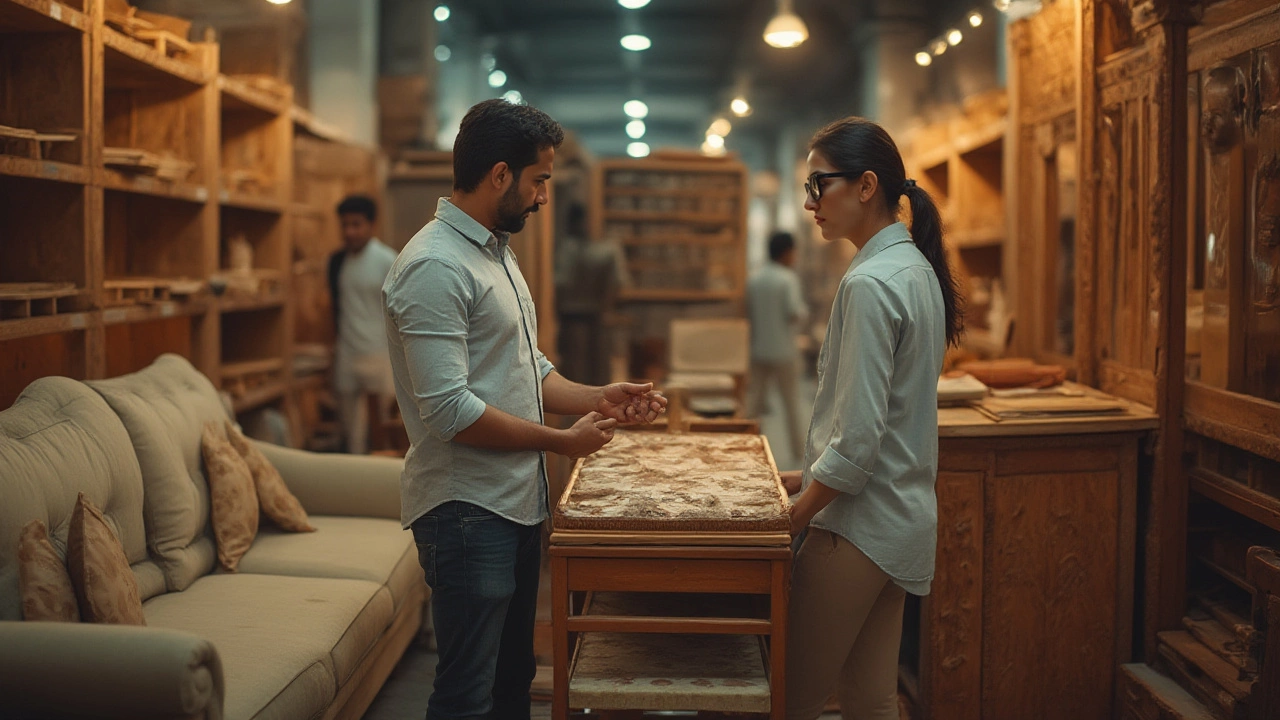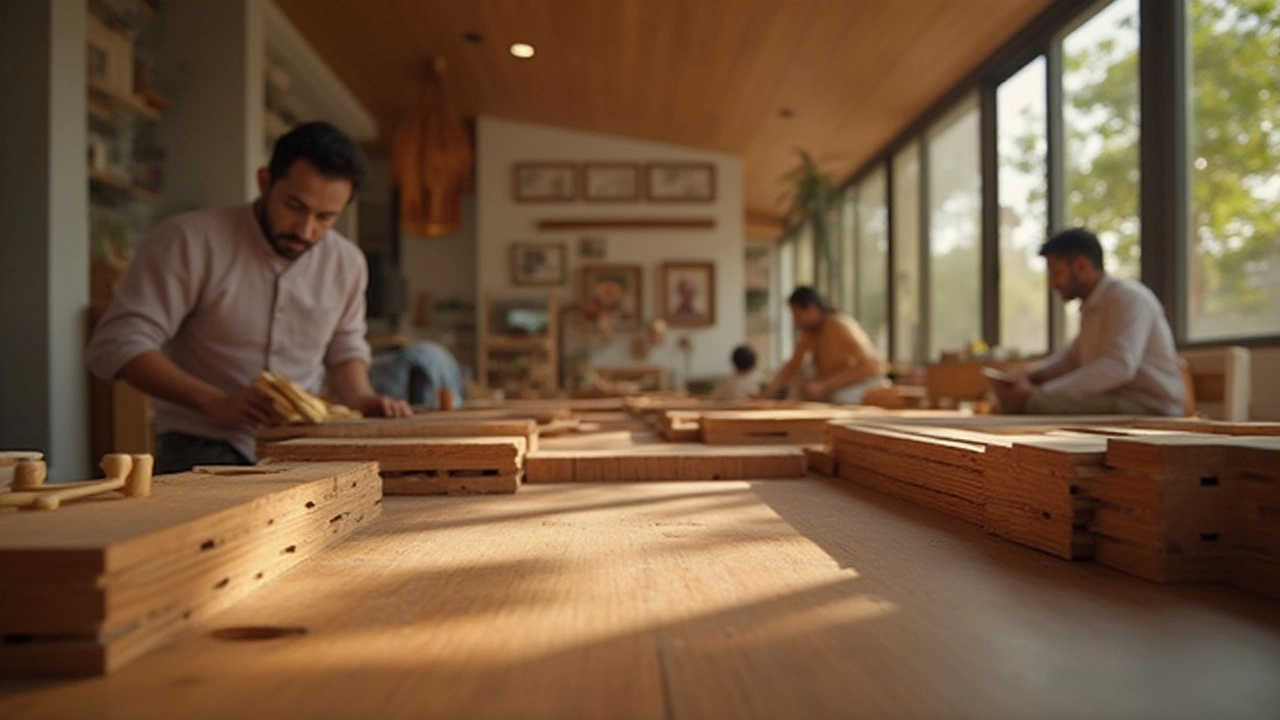Ever run your hand over a coffee table in a fancy store and wonder what justifies that enormous price tag? Maybe you're tired of wobbly chairs from flat-pack shops or that sofa that looked plush online but sags like a hammock within a year. Furniture can be a huge investment, and the difference between brilliant and shoddy isn’t always so obvious on the showroom floor or behind a glamour shot. A mate of mine once said, 'The devil’s in the details,' and he was right—especially when we’re talking furniture.
What Sets High Quality Furniture Apart?
People love telling you good furniture is 'solid,' but what does that even mean? High quality pieces start with the bones—the frame. You want solid hardwoods, like oak, maple, ash, or teak. Give that table leg a firm knock; it should feel dense, not hollow. Unlike cheap veneer over particleboard, solid wood ages beautifully, doesn't crumble, and shrugs off the bashing of daily life. Here’s a quick stat: according to a 2023 survey by the Australian Furniture Association, solid hardwood furniture lasts on average 2.5 times longer than items made from MDF or particleboard.
Then you get to joints. Forget staples and visible nails. True craftsmen use dovetail, mortise-and-tenon, or dowelled joints—these techniques lock the wood together tightly and last decades, not months. Peek inside a drawer and look for dovetails—they’re like puzzle pieces that interlock.
Upholstery tells its own story. Run your hand over the seams. Are they even, tight, and double-stitched? High end sofas use eight-way hand-tied springs—yes, someone literally ties every single spring—to keep seats comfy and prevent sagging. Seat cushions should bounce back when pressed. Foam should be dense—no sad, flat pancakes after a few months. For fabrics, high quality materials like wool, linen, or top-grain leather wear in, not out. If the fabric feels loose, pilled, or plasticky, chances are it’s not built to last.
Finishes are easy to underrate. A quality piece might get hand-sanded five or six times before staining. The finish should be smooth as glass, showing the wood’s natural grain (not hiding it under a thick lacquer that chips). Water rings or scratches from your keys? Not if it's been finished right. A real tip: bring a coin and gently run its edge along a disguised spot under the piece—bad finishes scratch easily, the best don’t flinch.
What about hardware? Pull out a drawer. Good pieces have metal runners or wooden slides, not flimsy plastic parts. Handles and knobs should be heavy (brass, stainless steel, or even iron), not breakaway plastic in fake chrome paint.
| Material | Typical Lifespan (years) |
|---|---|
| Solid Hardwood | 25+ |
| Engineered wood (MDF/Particleboard) | 5-10 |
| Metal frames | 15-30 |
| Plywood (high-grade) | 10-20 |
Recognising Quality in Common Furniture Pieces
A dining table’s job is simple—hold food, drinks, and maybe your elbows, but day-to-day knocks add up. Quality tables use at least 2.5cm thick tabletops. The edges should be solid, not merely capped with veneer. On chairs, press the seat down and rock it side to side. If there’s a creak or any wiggle, walk away. Joints should be pinned or dowelled, not just glued. When chairs have stretchers (those bars between the legs), it’s a sign of greater stability—they’re practical, not just decorative.
For sofas, sofas should feel solid and heavy when you lift a corner. Flimsy frames mean saggy seats in less than a year. Ask if the cushions are reversible—having fabric on both sides doubles their lifespan. Zippers on cushion covers mean you can remove and wash them, a real must if you enjoy red wine or have kids (or both, like my neighbour Tom, who knows all about this after a disastrous spaghetti night).
Drawer units get sloppy when they’re mass produced. Pull out a drawer; it should slide out smoothly without wobbling. Look for drawer stops so the whole thing doesn’t fall out onto your toes. The bottom should be solid wood or thick plywood, not just a flimsy hardboard that buckles with a few socks.
Beds deserve special attention. Shake the headboard. Any movement is a red flag. Storage beds should have proper ball-bearing drawer slides, not cheap bar runners that stick and squeal. High-end beds also use kiln-dried wood in their frames—this means the timber has been dried to a specific moisture level (usually under 12%), stopping it warping or cracking in the Aussie climate.
When it comes to bookcases, press gently on the shelves. Good ones won’t bow under the weight of your old uni textbooks. Adjustable shelves should fit snugly, not sliding around. If the back is just stapled-on hardboard, that’s not a good sign; you want a thick, grooved-in back panel that holds the whole thing square.

Red Flags and What to Avoid
So what separates something worth your dollars from landfill in disguise? Particleboard with a thin veneer is the most common culprit. It feels light for its size—almost alarming. Pick up a small nightstand. If it’s so light you can do a one-arm curl, it’s probably fiberboard or MDF, not solid timber.
Check for mismatched grain patterns. Manufacturers often slap a veneer on top of a totally different wood or glue up short 'cut-off' pieces and hide them with stain. True quality pieces have grain that runs continuously across the top, down the sides, or at least shows a natural flow. And those vague terms like 'real wood finish' usually mean anything but real wood. If it sounds too good to be true at the price, it probably is.
Watch for overdone finishes—super shiny, thick lacquers sometimes mask lower-grade materials. Fake antique effects ('distressed wood') often hide newer, cheaper materials underneath. Don't fall for factory 'worn' edges if that's not your thing. And don’t trust a drawer with cardboard base—give it a poke to check its strength; if it flexes easily, skip it.
Hardware is another dead giveaway. Pull handles off easily, feel light, or have rough edges, it’s not a good sign. Even the screws tell a story. Philips or Torx head screws are more reliable than slotted ones; hardware should feel solid and secure. Hinges should never creak or feel loose when you swing a cupboard door.
Sofas and beds often sacrifice quality for looks—avoid anything that feels suspiciously 'air-filled' or ultra-light. Flip a sofa upside down; do you see webbing, cheap staples, or a mess of loose ends? That’s a no-go. Proper seats don’t sag or show springs through the bottom panel.
One survey by CHOICE Australia found that 37% of buyers reported visible defects or parts breaking on budget furniture within the first two years. That’s not just annoying, it’s expensive over time. Think long-term: will this piece survive a move or a child’s dinosaur phase?
Shopping Smart: Practical Tips for Finding High Quality Furniture
When you hit the stores or scroll online, don't be shy about asking for the specifics. What materials is it made from? Ask the sales rep if it’s solid wood, engineered wood, or veneer. Request details about joinery—many good brands are proud to show off their craftsmanship, even laying samples on the shop floor.
Bring a magnet; most furniture hardware should be real metal, not coated plastic. Don’t trust everything you read online—read the reviews, paying special attention to complaints about durability or comfort. If you're shopping in person, check the smell. Real solid wood has a richer, obvious scent compared to the blandness of MDF or laminate.
Ask about warranty. Many top manufacturers stand by their furniture with multi-year (sometimes even lifetime) warranties. No warranty or a vague 'limited' one isn’t reassuring.
Pay attention to the country of origin. Italy, Denmark, and Australia have reputations for exceptional builds, while imported budget pieces often cut corners. Look for logos or certifications: FSC (Forest Stewardship Council) means the wood is sourced responsibly. Good foam in sofas will have CertiPUR or OEKO-TEX certifications, signifying less chemical content.
Here’s an extra tip: ask to see a floor model that’s been on display for months. If it’s holding up—no saggy seats, faded fabrics, or wobbly drawers—you’ve got a solid option. Good furniture is an investment. You’re not just paying for something to sit on; you’re buying years of comfort, less clutter, and (hopefully) a conversation starter next time your mates visit for a drink.
To sum it up, if you take away anything, it’s this: do your legwork, check for authentic materials and sturdy frames, don’t rely on looks alone, and always question the feel. The quality is right there in the details—you just have to know where to look.

